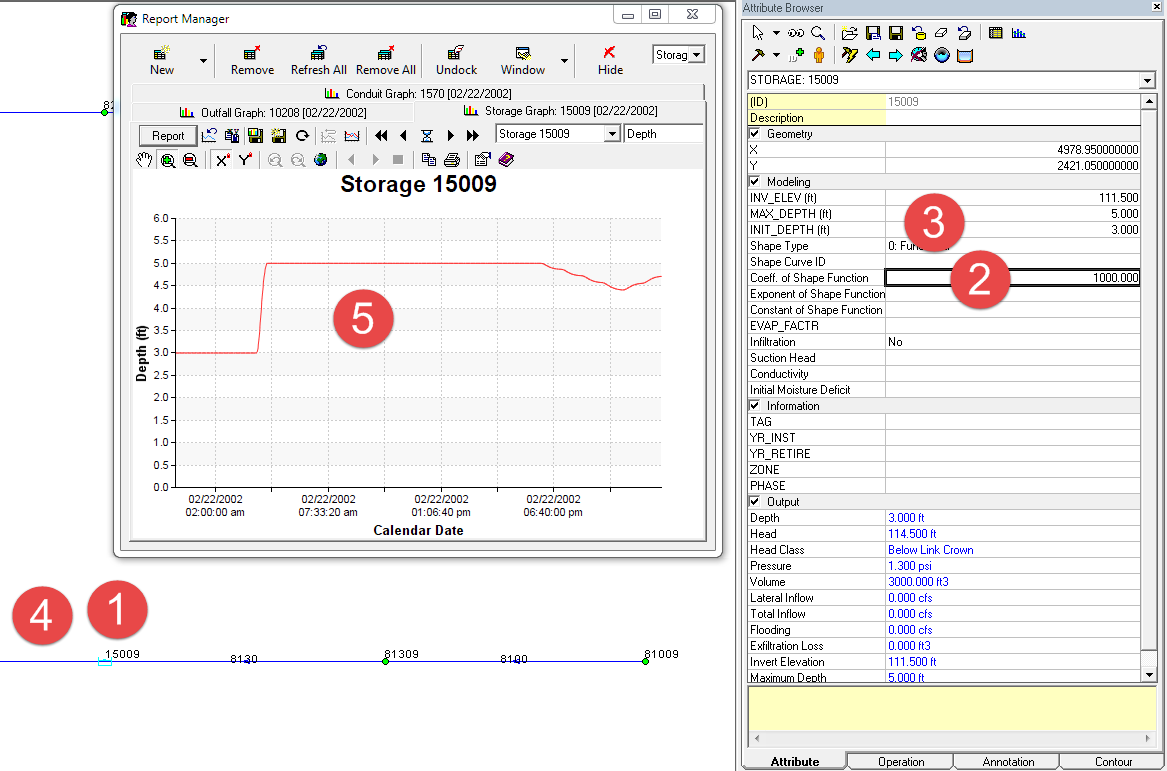 |
Press Room | Products | News | Events | The Company
|
Innovyze Releases SWMMLive Generation V5.5, Powering Real-Time Stormwater, Wastewater and Watershed Modeling
|
Latest Release Features Comprehensive Exporting and Reporting Tools and Significant Usability Enhancements
|
Broomfield, Colorado, USA, February 17, 2015 — Innovyze, a leading global innovator of business analytics software and technologies for smart wet infrastructure, today announced the worldwide release of the V5.5 Generation of its SWMMLive for real-time operational forecasting, modeling and management of urban drainage systems. The latest release features significant customer-requested functionality that gives wastewater utilities an unsurpassed tool for identifying flood-vulnerable assets and formulating sound and cost-effective remediation/mitigation strategies.
SWMMLive combines the comprehensive urban drainage modeling capabilities of industry-leading InfoSWMM(and H2OMAP SWMM), with sophisticated real-time operational forecasting, early warning, and emergency management. This powerful risk assessment and real-time decision making tool allows utilities of all sizes to operate and manage their collection systems more efficiently and effectively than ever before. It enables managers and operators to consider the influence of a full range of catchment factors in three key areas: management of flooding and reduction of unregulated discharges; optimization of storage, green alternatives and existing infrastructure, leading to savings on capital works; and optimization of pumps to lower energy costs and reduce CO2 emissions.
SWMMLive can directly import any InfoSWMM or H2OMAP SWMM project, and is designed to work automatically. Once a system is configured, real-time data is continually and automatically harvested and quality checked. This data can be defined by a number of parameters, including observed and forecasted radar rainfall, online water quality measurements, and ancillary structure and pump operation time series. Simulations are run automatically at a user-defined frequency using the full hydrodynamic and advanced technological capabilities of InfoSWMM(and H2OMAP SWMM), including water quality assessment, pollution prediction, urban flooding, green LID and BMP alternatives, and real-time control. Simulation frequency can change in response to user-defined conditions. For example, increased rainfall intensity can trigger a reduction of the interval between simulations.
Warnings or alerts triggered during the forecast period are instantly displayed via the rich SWMMLive user interface, allowing system operators to see at a glance which areas need attention and what actionable options might be taken. Comparison alerts can be used to highlight differences between observed and modeled results, enabling users to refine their models — and creating unprecedented confidence in simulation results.
SWMMLive also allows operators to perform simulations that explore alternative real time control scenarios — such as the impact of switching on a pump earlier than planned — and quickly seeing the effect of these changes on the system. The wide range of capabilities in SWMMLive make it a key tool in the decision making process, enabling operators to take action to avoid system issues, release timely alerts, and quickly deploy response teams if necessary.
V5.5 introduces the ability to automatically export graphs and maps to image files, making it possible to to create Post Event Reports displaying results from automatic simulations within a specified time range for a selection of locations. Post Event Reports allow operators to assess the accuracy of forecasts against the latest observed data, ensuring complete confidence in the simulation run results.
The new version also introduces a range of usability enhancements that make creating and monitoring real-time forecasts easier than ever. They include a new Alert Count window showing the number of instances of each alert, a new Custom Graph window providing effortless graphing for predetermined network objects, user security roles revisions, a self-maintaining Innovyze Live Server run log and additional keyboard shortcuts and grid tooltips within the SWMMLive Configuration Manager. SWMMLive V5.5 even allows simulation runs to be triggered by third party, external tools.
For a complete listing of new features and capabilities in SWMMLive V5.5, visit the “What’s New” section in the online help.
“Since its initial release, SWMMLive has become a leading operational forecasting and real-time modeling solution for users of InfoSWMM, H2OMAP SWMM and the EPA SWMM 5.1 simulation engine,” said Paul F. Boulos, Ph.D., BCEEM, NAE, Hon.D.WRE, Dist.D.NE, F.ASCE, President, COO and Chief Operating Officer of Innovyze. “The advances in this latest release confirm the product’s standing as the ultimate decision support system for operating and sustaining safe, reliable and efficient infrastructures and enabling wastewater utilities worldwide to harness the power of real-time data.”
|







![image_thumb[1] image_thumb[1]](http://swmm5.files.wordpress.com/2015/02/image_thumb1_thumb.png)
![clip_image002_thumb[1] clip_image002_thumb[1]](http://swmm5.files.wordpress.com/2015/02/clip_image002_thumb1_thumb.jpg)
![clip_image004_thumb[4] clip_image004_thumb[4]](http://swmm5.files.wordpress.com/2015/02/clip_image004_thumb4_thumb.jpg)




